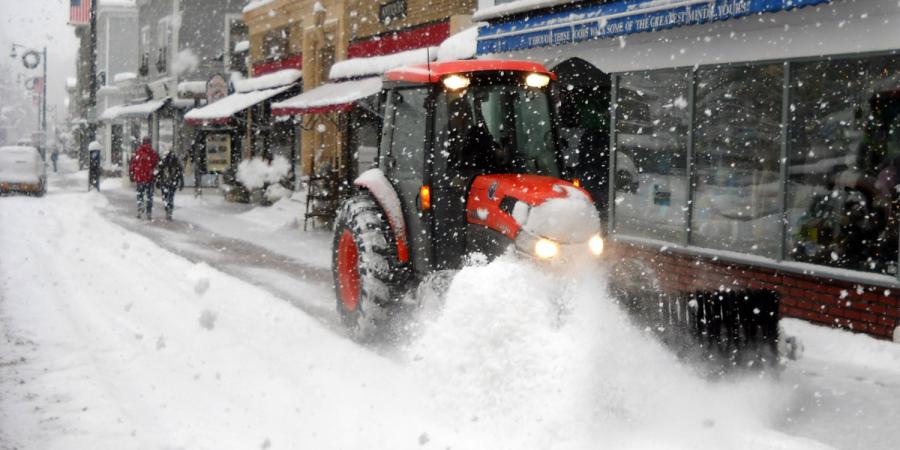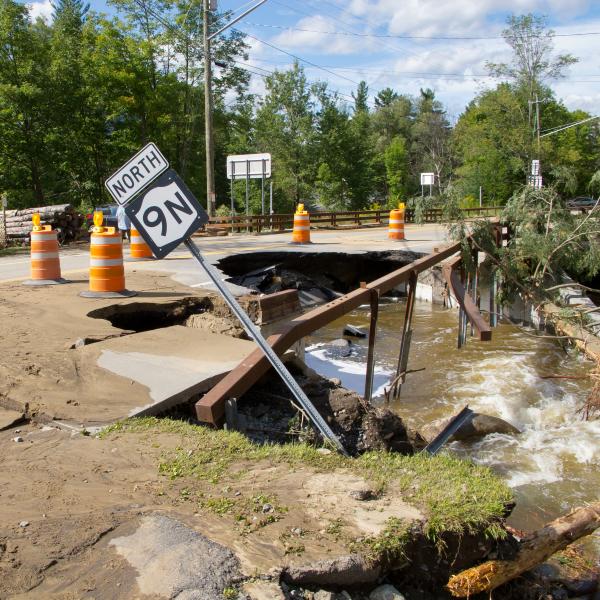With the arrival of winter comes the constant effort to keep roads, driveways, and sidewalks clear of snow and ice. The methods used to address snow and ice buildup can have significant impacts on our local streams and lakes. Sections of the Ausable River and many of its tributaries have chloride levels 16 to 120 times higher than unaffected streams. Chloride is only part of the picture; sodium, magnesium, and calcium are also used in road salt and make their way into local waterways. The Ausable River Association is working to study the impacts of road salt on our watershed and encourage local, county, and state officials to reduce the amount of salt applied to our roads and sidewalks. The following five tips will help you maintain your driveway and walkways while being a good steward of our watershed.
1. Stay On Top of It
The most efficient and effective means of snow removal is physical removal either by shoveling, plowing, or snow blowing. Make sure to keep up with snow clearing so that your driveway and sidewalks don't get hard packed or too deep to deal with. This might mean going out during the middle of storm rather than waiting until the end. If you can remove the snow before it has a chance to bond to paved surfaces, your work will be much easier. Also, try to avoid driving over snow in your driveway. Snow packed by the weight of a car tends to bond to pavement and will be much more difficult to remove.
2. Let The Sun Help
Keep an eye on the forecast. If sunny days are ahead, even if temps are going to remain below freezing, you may be able to use the sun to help you out. Exposed portions of dark pavement will absorb heat on sunny days and help loosen snow and ice in adjacent areas. You might consider moving vehicles from your driveway on particularly sunny days to maximize the surface area available to absorb solar energy. Get out early in the afternoon, before sun starts to set and temperatures drop, to remove snow and ice that has loosened.
3. Use an Ice Breaker
If snow and ice become bonded to your pavement, consider using an ice breaker or flat blade metal shovel to break it up. First trying scraping the ice off the pavement, if this doesn't work you can pound on it vertically and hopefully break it into chunks. Once you get a small portion loose, the rest will usually break free much easier.
4. Use Abrasives to Give Traction
One of the principal concerns around our homes and businesses is the risk of someone slipping and falling. Sand serves as a good abrasive to provide traction and has the added benefit of being dark in color which on sunny days will help melt surrounding snow and ice. At the end of the season, plan to sweep and collect the sand for reuse next year. Letting it runoff and make its way into our local water bodies can be problematic. Excessive amounts of sand entering lakes and rivers can smother critical habitat for fish and other aquatic organisms.
5. Use Sodium Chloride Alternatives
Sodium chloride, aka rock salt, is the most common de-icer used on roads, parking lots, and walkways. Unfortunately, excessive amounts of both sodium and chloride can be harmful to nearby vegetation, birds, wildlife, and aquatic ecosystems. Sodium chloride can also make it into our groundwater, contaminating our drinking water supplies for many years. There are more environmentally friendly alternatives. First, consider liquid alternatives. These often allow you to apply less salt while still effectively breaking up snow and ice. Secondly, calcium magnesium acetate (CMA) is a non-chloride based alternative that is better for the environment. Acetate quickly breaks down in soils and calcium and magnesium are much less harmful to the environment than sodium and chloride. CMA based products are more expensive than chloride based de-icers and aren't quite as effective at extremely low temperatures, but they are more environmentally friendly. Caution should be used when using CMA in an area where runoff directly enters a waterbody. CMA uses up a lot of oxygen and can threaten aquatic life when large amounts directly enter a waterbody. Use all of these products sparingly and don't expect them to replace shoveling and scraping.
By following the tips above you will help protect your local environment while also maintaining a safe driveway and sidewalk. If you want to go a step further, consider attending a local village, town, or county meeting and express your concerns over the negative impacts of road salt on the environment. You might also consider supporting or getting involved with a local watershed organization.
Top Photo Credit: Lake Placid Region, Flickr Creative Commons Attribution License
Sign-up for our e-newsletter to get weekly updates on the latest stories from the Ausable River Association.




